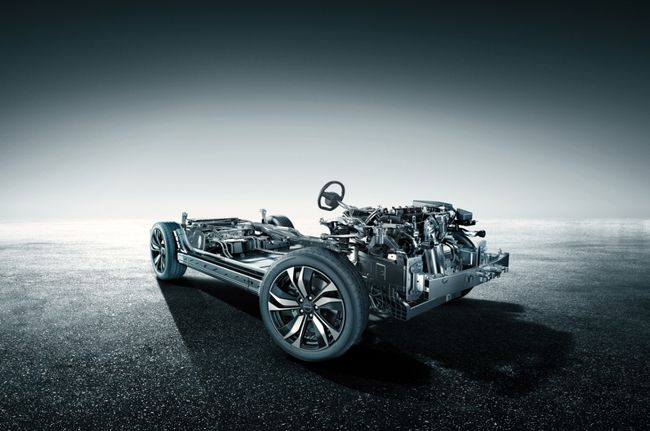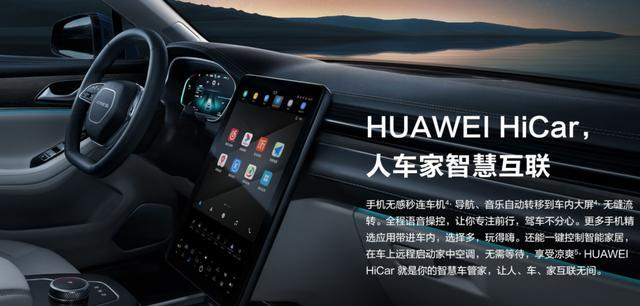*This article is reproduced from the autocarweekly official account
Author: Du Debiao
These days, everyone is discussing SAIC’s rejection of Huawei’s proposal.
Summarizing it this way is somewhat taken out of context, and public opinion is divided into several factions based on this. Opponents believe that SAIC, as a brand with only a sales ratio of 1/5 (excluding the 1.6 million sales contribution from GM Wuling) and mainly relying on joint ventures, has little qualification to reject Huawei’s potential olive branch.
However, in reality, what SAIC’s Chen Hong said was that “it is difficult for SAIC to accept a solution provided by a single supplier.”
According to Huawei’s collaboration with SAILSCIENCE and BJEV, Huawei’s solution can be summarized into two types. The first is DriveONE’s three-in-one electric drive system + HiCar, as used by SAILSCIENCE. Huawei provides an integrated solution of software and hardware which includes motor controllers, motors, gears, and interconnection systems. The second is for BJEV, an autonomous driving package that includes the Huawei Kirin 990A chip, as well as lidar, and embedded Hongmeng OS.
SAIC refused to accept a similar second proposal.
Although SAIC’s independent sector performance still has room for improvement, that doesn’t mean that SAIC, which is still relying on joint ventures, should fully embrace Huawei. The so-called “not accepting the integrated solution” is the key information. SAIC, relying on joint ventures, may not want to give up their own power. Even in the traditional sector, SAIC has already cooperated with General Motors in developing Blue Core Power. If shaping an independent soul is a trend for the independent areas of joint ventures, there is no need to regress on the path towards intelligence transformation.
The so-called regression, of course, refers to the outsourcing of the entire system, which is no different from the nature of technology for the market during the early development of the domestic automobile industry. The difference is only in who the affiliate is. From the perspective of “handing over the soul to others for shaping,” whether it is given to Huawei, GM, or Volkswagen, SAIC is no longer SAIC itself.
Even the two brands that collaborated with Huawei to varying degrees have interesting modes. For example, SAILSCIENCE chose a middle-level cooperation plan. On this basis, there may be an intention to leverage the Huawei brand. While BJEV adopted a deep cooperation mode, the finished product has not yet come out, more like a futures, or can be understood as a joint-name product based on deep appropriation, and as for the pre-sale price of 388,900 yuan for the Alpha S Huawei HI basic version, how much market space it has is hard to say, with a significant symbolic component.
 On the one hand, Beiqi may have considered Huawei’s dominant position, but for Beiqi’s own brand, Huawei is like a strong medicine that can cure the disease but also has an immune impact on oneself. It seems that it is a lifesaving move that Beiqi has to take at this stage. At the same time, ARCFOXxia is also leaving itself a hand, and its main models are still independent intellectual property rights models priced between 250,000 and 280,000 yuan, while Huawei plays not only a technology supplier, but also a brand promoter role.
On the one hand, Beiqi may have considered Huawei’s dominant position, but for Beiqi’s own brand, Huawei is like a strong medicine that can cure the disease but also has an immune impact on oneself. It seems that it is a lifesaving move that Beiqi has to take at this stage. At the same time, ARCFOXxia is also leaving itself a hand, and its main models are still independent intellectual property rights models priced between 250,000 and 280,000 yuan, while Huawei plays not only a technology supplier, but also a brand promoter role.
It is evident that manufacturers are maintaining their distance when selecting suppliers to cooperate with, which is the subtlety. What should be really opposed is the either-or mentality. Embracing or building cars in isolation may both be impractical. In fact, although Chen Hong publicly rejects outsourcing the overall solution, SAIC is still maintaining cooperation with Huawei in autonomous driving on a technical level. In other words, the boundary is critical.
Observing SAIC’s “limited rejection of Huawei” may remind people of Gus in “Breaking Bad” who was determined to get rid of Walter, while Walter gradually emerged a self who wanted to be the leader after his self-protection. The relationship between host plants and suppliers in the intelligent automobile field is definitely not a win or lose situation, but if the initiative is given away from the beginning, it is like being passive. Therefore, Chen Hong’s remarks are more like expressing a bottom line.
At present, leading automobile companies have provided a template- the prevailing strategy is all-stack R&D. After the initial cooperation with suppliers, Tesla, XPeng, and Ideal all chose to undertake R&D themselves. For example, the driver assistance system used by the 2021 Ideal is independently developed by Ideal, with hardware still coming from the supplier system, such as the chip from Horizon and the millimeter-wave radar from Bosch, but the integrated engineering uses Ideal’s perception algorithm; and XPeng, which is now known as the “car company closest to Tesla”, needs to have an adjective added before this – development mode. Similar to Ideal, most of the XPeng P7 autonomous driving assistant system, except for the chip, also come from self-research.
The hardware is provided by others, but the software is developed by oneself. The hardware is the body, and the software is the soul. In a narrow sense, Chen Hong probably means that an all-stack approach is not that automobile companies have to cover both hardware and software, like building a house, with the structure being determined by a structural engineer, but the engineer is not the one who manufactures all the heavy machinery. It is only necessary to know how to make good use of these machinery and how to choose.In the age of intelligence, concepts such as algorithms or artificial intelligence have given engineers and developers greater independence to think independently. It is not just about outsourcing or handing over the initiative to suppliers; it also involves future product styles. After all, once technology is mastered, it determines the level of homogenization of future products in the automotive industry.
However, Huawei’s dominance (due to technological strength rather than attitude) always speaks for itself. Mastering core autonomous driving technology is equivalent to mastering the commanding heights of the future automotive world. From this point of view, Huawei’s decision not to make cars may be more advantageous than to make them. This is probably also the reason why SAIC Chen Hong believes that the task must be independently completed by SAIC. Otherwise, another external acquisition would simply be a copy and paste, and compared with the market exchange with joint venture technology many years ago, it may not be a winning strategy.
Based on this, although SAIC’s direction may be bold and its self-development investment is huge, it is a positive one. The difference lies in who first breaks away from the supplier’s oxygen supply. As newcomers in this field, they need to learn from suppliers first and then become independent.
This article is a translation by ChatGPT of a Chinese report from 42HOW. If you have any questions about it, please email bd@42how.com.
